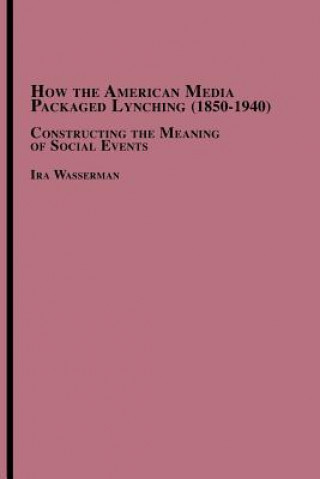
Dostava
Savjetnik za kupnju





Proizvod vam ne odgovara? Nema veze! Možete nam vratiti unutar 30 dana
 Poklon bon
u bilo kojoj vrijednosti
Poklon bon
u bilo kojoj vrijednosti
S poklon bonom ne možete pogriješiti. Za poklon bon primatelj može odabrati bilo što iz naše ponude.
How the American Media Packaged Lynching 1850-1940
 Engleski
Engleski
 236 b
236 b
30 dana za povrat kupljenih proizvoda
Moglo bi vas zanimati i


This book examines the manner in which the national media in the United States treated lynching and vigilante activity between 1850 and 1940. A social constructionist perspective, developed by Gamson and Modigliani, is utilized to determine media orientation toward lynching. The perspective emphasizes the importance of media framing, sponsor and opponent activity, and media balance. Since not all lynching incidents can be studied, critical discourse moments are selected. Four broad time periods in different regions of the nation are defined, and lynching is examined in these areas. In the 19th century, the media in all areas of the nation were relatively favorable toward lynching, and used it as a means of mass entertainment. By World War I, there was a significant change in media treatment of the behavior, with the activities of opponents, as well as its social consequences, increasing media opposition to it. Lynching atrocities, including burning the lynch victim alive, turned the media and public against it, as did the causal connection between lynching and race riots. Opponents of the activity, as well as public celebrities, became more outspoken against it, as did political cartoonists, who showed its consequences. In general, media opposition to lynching followed public opinion changes, rather than creating these changes.
Informacije o knjizi
 Engleski
Engleski




 Kako kupovati
Kako kupovati

































